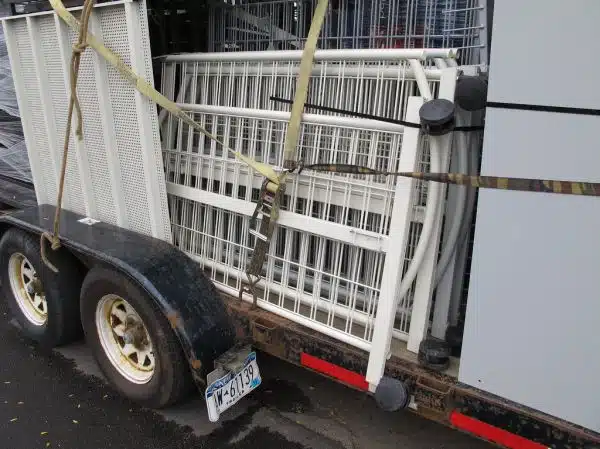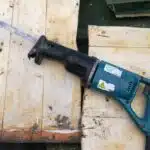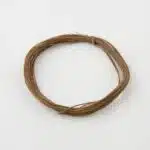Wire shelving is a popular storage solution for homes and businesses alike. It is durable, versatile, and easy to install. However, there are times when wire shelving needs to be cut to fit a specific space or to create custom sizes. Cutting wire shelving can seem daunting, but with the right tools and techniques, it can be done easily and efficiently.
As a wire shelving installation expert, I have seen firsthand the benefits of properly cutting wire shelving. Whether you are installing new shelves or modifying existing ones, knowing how to cut wire shelving is essential for achieving a perfect fit. In this article, I will provide step-by-step instructions on how to cut wire shelving using common tools found in most households or workshops. By following these guidelines, you will be able to confidently tackle your next wire shelving project and serve others by providing them with functional and customized storage solutions.
Measuring Your Shelving Needs
When it comes to maximizing space and organizing your home or office, wire shelving is an excellent choice. Not only does it provide ample storage, but it is also customizable to fit any size and shape of the room. However, before you start cutting your wire shelving, you need to measure and customize its dimensions according to your needs.
To begin with, take accurate measurements of the area where you plan to install wire shelving. Use a measuring tape or ruler to determine the length and width of your shelves. Also, keep in mind the height of the objects that you plan on storing on these shelves. Once you have these measurements, compare them with standard sizes available at hardware stores or online suppliers. If none of the standard sizes work for you, then choose custom-made wire shelving that can be tailored according to your requirements.
Customizing dimensions is crucial when installing wire shelving. You can cut down the shelves using bolt cutters or a hacksaw to fit into tight spaces such as corners or under staircases. Moreover, adding additional shelves between two existing ones can increase storage capacity without taking up more floor space. In summary, measuring accurately and customizing dimensions are essential steps before starting any installation project involving wire shelving.
Choosing The Right Tools For The Job
Selecting appropriate materials is a crucial step before cutting wire shelving. It is important to choose the right type of cutters that can handle the thickness and strength of the wire. For instance, heavy-duty bolt cutters are ideal for thick and strong wires, while wire cutters are suitable for thin wires. Using the wrong tools can result in damaging the wire or injuring oneself.
Comparing various cutting techniques can also help in achieving a clean and precise cut. One popular technique involves using a hacksaw blade to saw through the wire. Another technique is using an angle grinder with a metal-cutting blade to achieve a quick and efficient cut. The choice of technique depends on the type of wire, available tools, and personal preference.
When selecting tools and techniques for cutting wire shelving, it is essential to prioritize safety measures. Wearing protective gear such as gloves and goggles can prevent injuries from flying debris or sharp edges. Additionally, ensuring that the wire is securely clamped down before cutting can prevent it from shifting or slipping during the process. Proper safety precautions not only protect oneself but also ensure that the job is completed efficiently without any mishaps.
Transition sentence: Now that we have discussed selecting appropriate materials and comparing various cutting techniques, let us move on to ensuring proper safety precautions when working with wire shelving.
Ensuring Proper Safety Precautions
As you move on to the cutting stage of wire shelving installation, it is crucial to make sure that you have the necessary safety gear. Safety goggles and gloves are a must-have during this process as they protect your eyes and hands from potential hazards. Wire shelving has sharp edges that can easily cause injuries if not handled with care.
It is important to note that cutting wire shelving can be dangerous if proper precautions are not taken. The sharp edges of the wire can cause cuts or punctures if handled improperly. Therefore, it is recommended to use pliers and wire cutters specifically designed for this purpose.
Before starting the cutting process, prepare your workspace by clearing out any unnecessary items and laying down a protective covering on your work surface. This will prevent damage to the surrounding area and ensure a clean workspace. When all these measures are in place, you can proceed with confidence, knowing that you have taken all necessary steps to ensure both your safety and the quality of your work.
Preparing Your Workspace
Organizing materials is an important step in any wire shelving installation project. Before you begin cutting the wire shelves, ensure that you have all necessary tools and equipment at hand. This includes a tape measure, pliers, a hacksaw or bolt cutters, and safety gloves. Make sure that your workspace is clean and free of debris to avoid accidents.
Choosing the right workspace is equally important as organizing materials. You need to select a flat surface where you can place the wire shelves for cutting. The surface should be stable and level to prevent the shelves from moving around while cutting. Avoid working on uneven surfaces or areas where there are obstacles that could impede your movement.
Once you have organized your materials and chosen the right workspace, it’s time to move on to marking the cutting points. This entails measuring and marking out each shelf according to your desired dimensions before making any cuts. Remember to take accurate measurements to avoid errors that could compromise the integrity of your wire shelving system.
Marking The Cutting Points
After preparing your workspace, it is time to mark the cutting points on the wire shelving. This step is crucial in ensuring that the shelves fit perfectly into your chosen space. To achieve measuring accuracy, use a tape measure and a pencil to mark the points where you want to cut. Make sure that your measurements are precise and double-check them before proceeding with cutting.
Safety should always be a top priority when cutting wire shelving. Before starting, make sure to wear safety equipment such as gloves and goggles to protect yourself from sharp edges and debris. It is also important to secure the wire shelving firmly in place using clamps or a vice grip to prevent it from moving while you cut.
To ensure an efficient and precise cut, consider using a hacksaw with fine-toothed blades specifically designed for cutting metal wires. This type of saw will allow you to make smooth cuts without damaging the structure of the wire shelving. Make sure to apply consistent pressure while sawing and avoid applying too much force as this may cause the wire shelves to bend or warp.
Next up is actually using a hacksaw on the wire shelving itself.
Using A Hacksaw
Using a hacksaw is one of the most common methods for cutting wire shelving. Before starting, it is important to gather all necessary tools and materials such as safety goggles, a hacksaw with fine teeth, and a measuring tape. Once you have these items, follow these best practices for using a hacksaw to cut wire shelving.
First, measure the length needed for your wire shelf and mark the cutting line with a permanent marker or masking tape. Then, clamp the wire shelving securely to a workbench or table before beginning to cut. This will prevent the piece from moving around while you are sawing it.
Next, use the hacksaw’s fine teeth to make slow and steady cuts along the marked line. Avoid using too much pressure as this can cause the wire shelving to bend or warp. Instead, let the saw do the work and focus on maintaining a straight cutting line throughout.
While using a hacksaw is effective for cutting wire shelving, there are alternative methods available that may better suit your needs. For instance, bolt cutters are another popular option that can provide cleaner cuts without leaving burrs or rough edges behind. However, it is important to note that bolt cutters may not be suitable for thicker wires or heavier duty shelves.
Transitioning into the next section about ‘using bolt cutters’: If you’re looking for an alternative method that provides cleaner cuts without leaving rough edges behind, consider using bolt cutters instead of a hacksaw.
Using Bolt Cutters
After using a hacksaw to cut wire shelving, you may find that it is not always the most efficient method. Luckily, there are other tools at your disposal for this task. One such tool is a pair of pliers. While pliers might not be the first thing that comes to mind when cutting wire shelving, they can be quite effective.
When using pliers to cut wire shelving, it’s important to select the right type of shelving for your needs. There are many different types of wire shelving available on the market today, each with its unique characteristics and benefits. Some common types include chrome wire shelving, epoxy-coated wire shelving, and stainless steel wire shelving.
While these different types of wire shelving vary in material and finish, they all have one thing in common: they can be cut with pliers. To ensure a clean cut, make sure the wires are held securely in place while cutting. Use the pliers to grip the wires firmly and apply pressure until they snap apart cleanly.
Cutting wire shelving can be a tedious task, but it doesn’t have to be difficult. With the right tools and techniques at your disposal, you can quickly and easily get the job done. In the next section, we’ll explore another tool that can come in handy when cutting wire shelving: using a rotary tool.
Using A Rotary Tool
When it comes to cutting wire shelving, one of the most effective tools you can use is a rotary tool. It is essential to take safety precautions before using a rotary tool. First, ensure that you are wearing protective eyewear and gloves. Additionally, make sure that the area where you will be working is clear of obstructions.
Rotary tool techniques include selecting the appropriate cutting wheel for your project. There are various types of cutting wheels, including diamond-coated and metal cut-off wheels. Once you have selected the right blade, adjust the speed on your rotary tool so that it matches the thickness of your wire shelving. Take extra care not to apply too much pressure when cutting as this can cause the blade to break or damage your shelving.
Rotary tools offer an efficient way to cut wire shelving with precision; however, they require proper handling and caution when in operation. In the next section, we will look at using a reciprocating saw for cutting wire shelving in case you do not have access to a rotary tool or find it challenging to use.
Using A Reciprocating Saw
- When cutting wire shelving with a reciprocating saw, it is important to select the right blade for the job.
- Before beginning the cut, the reciprocating saw should be prepared by making sure it is properly lubricated and tightened.
- The cutting area should be marked with a permanent marker to ensure a clean, precise cut.
- The saw should be started at the marked area and moved in a slow, steady motion.
- The saw should be allowed to do the majority of the work and should not be forced.
- Once the cut is complete, the remaining piece should be removed and any rough edges smoothed out.
Choosing The Right Blade
When it comes to cutting wire shelving, using a reciprocating saw can be an efficient and effective option. However, choosing the right blade is crucial to achieving a clean and precise cut. As an expert in wire shelving installation, I highly recommend considering the type of material you will be cutting before selecting a blade.
Blade maintenance is also important to ensure that your reciprocating saw continues to perform at its best. After each use, it is recommended to clean the blade thoroughly and inspect for any signs of damage or wear. If needed, sharpening or replacing the blade can improve cutting speed and accuracy.
Ultimately, the cutting speed of a reciprocating saw depends on both the blade being used and the operator’s technique. It is important to maintain proper form and apply consistent pressure throughout each cut. By selecting the appropriate blade for your specific needs and maintaining it properly, you can achieve smooth and efficient cuts when working with wire shelving without sacrificing quality.
Preparing The Saw
To ensure the best performance from your reciprocating saw when cutting wire shelving, it is essential to properly prepare the tool. One important step is selecting the right blade for your specific needs. As previously discussed, different blades are available for cutting different materials and achieving different types of cuts. Take the time to research and choose a blade that matches the thickness and type of metal you will be working with.
Another critical step in preparing your saw for use is maintaining its blades. Blades can quickly become dull or damaged, leading to uneven cuts or even a complete inability to cut through material. After each use, take care to clean your blades thoroughly and inspect them closely for any signs of wear or damage. If you notice any issues, sharpen or replace your blade before using it again.
By properly selecting and maintaining your reciprocating saw blades, you can achieve efficient and precise cuts when installing wire shelving. Taking these steps may require some additional time and effort upfront, but they will ultimately save you time and frustration down the line by ensuring that your saw performs at its best every time you need it.
Making The Cut
Once you have prepared your reciprocating saw with the appropriate blade for cutting wire shelving, the next crucial step is making the cut itself. Measuring accuracy is vital to ensure that your shelves are level and properly aligned. Before starting, make sure to measure the placement of each shelf carefully and mark out where you will need to cut.
When it comes to cutting technique, it’s essential to maintain a steady hand and apply even pressure as you guide the saw through the metal. Be sure to wear protective gear like goggles and gloves to prevent injury from flying debris or slipping blades. A smooth, fluid motion will help you achieve a clean cut without damaging the metal or causing jagged edges.
Remember that practice makes perfect when it comes to using a reciprocating saw for wire shelving installation. Take your time and don’t rush through cuts, especially if you’re new to using this tool. With patience and attention to detail, you can achieve precise cuts that result in sturdy, reliable shelving for your home or business.
Cutting Wire Shelving With Minimal Distortion
Cutting wire shelving can be a tricky task, especially when it comes to avoiding warping or distortion. To minimize the risk of damage to your shelving unit, it is important to use the right tools and techniques. One of the most effective methods for cutting wire shelving is using a pair of bolt cutters. These tools are designed specifically for cutting metal wires and are ideal for use on wire shelving.
When using bolt cutters to cut your wire shelving, it is important to ensure that you are not applying too much pressure. This can cause the wire to bend or warp, which can affect the overall stability of your shelving unit. Additionally, it is important to choose finishing techniques that will help prevent rust and other forms of corrosion from developing on your newly cut edges.
There are several finishing techniques that you can use to protect your newly cut edges from rust and other forms of corrosion. One common method is using a rust inhibitor spray, which creates a barrier between the metal and moisture in the air. Another option is applying a coat of paint or clear sealant to the edges of your wire shelves. By taking these steps, you can ensure that your wire shelves remain strong, stable, and free from unsightly rust stains.
Now that you have successfully cut your wire shelves with minimal distortion and applied appropriate finishing techniques, it’s time to move on to cleaning up those edges. In order to create smooth edges that won’t snag or scratch anything they come into contact with, it’s important to file down any rough spots or sharp edges left behind by your cutting tool. With this step complete, you can rest easy knowing that your wire shelves are fully functional and ready for use!
Cleaning Up The Cut Edges
Congratulations on successfully cutting your wire shelving! Now, let’s move on to the next step of cleaning up those cut edges. After all, a clean edge makes for a much more professional and polished look.
Firstly, it’s important to polish the cut edges with appropriate polishing tools to smooth out any rough spots or burrs left behind from the cut. This helps in preventing rust from developing over time and also gives a neat appearance to the cut edge. There are a variety of polishing options available such as sandpaper, metal files, or rotary tools that can be used depending on the size and shape of the cut edge. Make sure to wear protective gear like gloves and goggles while using these tools.
If you’re looking for alternative finishes to your newly cut wire shelving edges, painting is an option. Painting not only adds a decorative touch but also prevents rusting by creating a barrier between the metal surface and air moisture. Before painting make sure that the surface is completely clean and dry otherwise paint will not adhere properly. You can use rust preventative primer followed by any paint of your choice that suits your interior decor style.
In addition to polishing tools and painting options, sanding is another great way to improve the appearance of cut edges on wire shelving. Sandpaper with different grits can be used for this purpose depending upon how rough or sharp the edge is after cutting. Sanding should always be done in one direction so as not to scratch the surface unnecessarily. Once you’ve sanded down any rough spots, take a cloth soaked in water mixed with dish soap and wipe away dust particles before proceeding further with any other finishing steps.
Sanding The Cut Edges
After cutting wire shelving, it’s important to clean up the edges before moving on to the next step. This ensures that any rough or jagged edges are removed, which can prevent injuries during installation or use of the shelving. Once you’ve cleaned up the edges, sanding is the next important task.
Sanding the cut edges of wire shelving is an essential step in ensuring a smooth and safe finish. Sanding removes any remaining burrs or sharp edges and creates a surface that is less likely to catch on clothing or skin. The sanding process should be done carefully and thoroughly, paying attention to every edge and corner.
When sanding wire shelving, it’s important to select the right type of sandpaper for your needs. Coarse grit sandpaper should be used for removing larger burrs or rough spots, while finer grits are better suited for smoothing out rough surfaces. It’s also important to avoid using too much pressure when sanding, as this can cause damage to the wire material.
Transition: Now that we’ve discussed why sanding is so important after cutting wire shelving and how to choose the right type of sandpaper, let’s move on to applying a protective coating to the cut edges.
Applying Protective Coating To The Cut Edges
Like a knight wearing armor, wire shelving also needs protection. Cutting wire shelving can leave the edges sharp and prone to rusting. To protect the shelving from rust and to ensure that it is safe to handle, applying Rust Oleum is recommended. This protective coating will not only safeguard your hands from cuts but also prevent the shelving from corroding.
Before applying Rust Oleum, put on gloves to protect your hands from the chemicals in the product. The gloves should be chemical-resistant and fit snugly. Once you have gloves on, shake the can of Rust Oleum vigorously for at least one minute after the mixing ball rattles freely. Hold the can 8-10 inches away from the cut edges and spray a light coat over them. Allow it to dry for at least two hours before handling.
Using gloves when applying Rust Oleum is important because it prevents damage to your skin and ensures that you are protected while handling cut wire shelving. The protective coating will not only keep your hands safe but also safeguard against rusting that can occur on exposed edges. By taking these steps, you can ensure that your wire shelving remains durable and long-lasting for years to come.
With protective coatings in place, installing cut wire shelving becomes easier and safer. Following these steps guarantees that you have taken necessary precautions before moving forward with installation.
Installing Cut Wire Shelving
After applying a protective coating to the cut edges of wire shelving, it’s time to install them. Maximizing space and organizing solutions are two key benefits of wire shelving. Before you begin installation, make sure you have all the necessary tools and equipment.
First, measure the wall where you want to install the wire shelving. Use a level to ensure that your measurements are accurate. Next, mark the spots where you will attach the brackets. Drill pilot holes into these spots and insert wall anchors if necessary. After this step is complete, attach the brackets to the wall using screws.
Installing cut wire shelving requires attention to detail and precision. If done correctly, it can lead to a more organized and efficient use of space in your home or office. However, common issues may arise during installation such as misaligned shelves or uneven brackets. Troubleshooting these issues will ensure that your wire shelving is sturdy and functional for years to come.
Troubleshooting Common Issues
Caring for wire shelving is an essential component of keeping it in good condition. However, many people make common mistakes that can cause damage to the shelves. One of the primary errors individuals make is overloading the shelves with weight beyond their capacity. Overloading can cause sagging and warping or even breaking of the shelving wires, which will compromise the durability and longevity of your shelves.
Another mistake that people make when dealing with wire shelving is failing to clean them regularly. Wire shelving can accumulate dust and debris over time, leading to discoloration and rust. Proper maintenance is crucial to preventing this buildup and ensuring you have a clean storage area. It’s necessary to wipe down your wire shelves routinely using a damp cloth, mild detergent, and warm water.
To prevent damaging wire shelving when cutting it, ensure you have proper tools for the job. Cutting wire shelves requires a specific set of tools such as bolt cutters or reciprocating saws fitted with metal-cutting blades. Additionally, it’s crucial to measure twice before cutting once to avoid making mistakes that could lead to waste or improper fitting of your shelving system.
Incorporating these tips into your daily routine will help maintain your wire shelving in excellent condition while preventing any possible mishaps. Proper maintenance includes cleaning and avoiding common mistakes like overloading your shelves. Lastly, investing in quality tools for cutting wire shelving will go a long way in ensuring you get the best results while minimizing waste or errors during installation.
Conclusion
Wire shelving can be a versatile and affordable option for storage solutions in a variety of settings. However, sometimes the stock sizes available at hardware stores won’t quite fit your needs. In that case, cutting wire shelving to size is a simple solution. By following these steps, you can ensure that your cuts are clean and safe.
First, carefully measure the space where you’ll be installing the shelving. Then, choose the right tools for the job – wire cutters or a hacksaw with a metal blade will work best. Make sure to wear safety goggles and gloves to protect yourself from sharp edges.
Before you start cutting, prepare your workspace by clearing any clutter and ensuring that the area is well lit. Mark the spots where you’ll be making your cuts with a pencil or marker, then make your cuts carefully and slowly. After sanding down any rough edges, apply a protective coating to prevent rust and corrosion.
If you encounter any issues during installation or cutting, don’t hesitate to consult an expert or refer back to these steps for troubleshooting tips.
One potential objection to cutting wire shelving may be concern over compromising its strength and durability. However, when done correctly using appropriate tools and safety measures, cutting wire shelving should not significantly impact its structural integrity. In fact, having custom-fit shelves may even improve organization and efficiency in your space. With careful planning and execution, cutting wire shelving can be a practical DIY project for anyone looking to maximize their storage options.
Image Credits
- “rolling wire shelving” by sparr0 (featured)





























